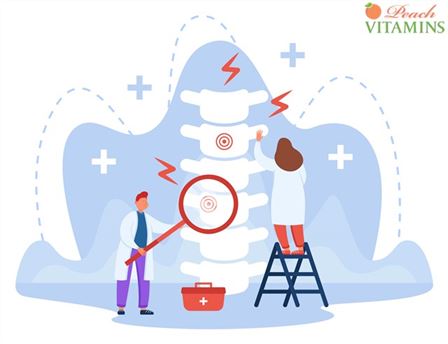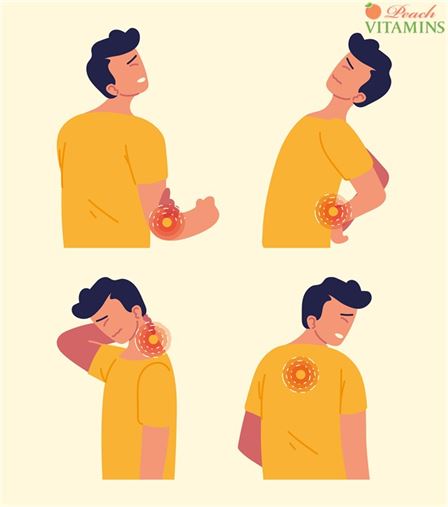Have you ever had neck pain? Or shoulder pain? Maybe even both? Well, there’s good news! There are natural remedies like Ayurvedic medicine for neck and shoulder pain that don’t involve taking prescription drugs. In fact, some of them are actually quite effective!
Neck and shoulder pain is common, especially after long periods of sitting at a desk. If you suffer from chronic pain, you may be tempted to turn to prescription medications. But these drugs come with serious side effects. There are natural ways to treat pain without relying on medication.
Did you know you can treat neck and shoulder pain naturally using Ayurveda? Sure, you may not be able to go to India and visit a traditional healer, but you can still benefit from the ancient healing techniques used by Ayurvedic practitioners.
There are several types of Ayurveda treatments for pain relief. These include massage therapy, yoga, meditation, herbal remedies and lifestyle changes.

Neck and Shoulder Pain: Causes and Treatment Options
Neck pain is common among people who spend long hours sitting at work or school. It can be caused by repetitive motions, poor posture, or other factors. The best treatment option depends on the underlying cause, so it’s important to determine what’s causing your neck pain.
There are many causes of neck pain, including muscle spasm, arthritis, disc problems, and nerve damage. Some treatments include physical activity with a physical therapist, medication, injections, and surgery. However, if you’re experiencing chronic neck pain, it might be worth considering alternative options. One example is Ayurveda, medicine based on ancient Indian traditions.
Ayurveda focuses on treating the whole person rather than just focusing on symptoms. It uses herbs, oils, and lifestyle modifications to treat patients holistically. Besides helping relieve pain, Ayurveda has been shown to help prevent future injuries.
Ayurvedic remedies can be used alone or combined with Western methods. For instance, yoga exercises can increase muscle strength and joints while improving flexibility. Other techniques include meditation, breathing exercises, and massage.
Besides traditional remedies, there are several natural supplements available today that can provide relief from neck pain. These include glucosamine, chondroitin, and MSM. Glucosamine helps build cartilage and joint fluid, while chondroitin helps repair damaged tissue. MSM is a supplement made from sulfur-containing amino acids that have anti-inflammatory properties.

Neck Pain in Ayurveda
In today’s world, neck pain has become a common problem among people. It is caused due to many reasons including injuries, accidents, stress, poor posture etc. The most common symptoms include stiffness, soreness, tingling sensation, numbness, burning sensation, weakness, and loss of balance. In Ayurveda, neck pain is called “Kapha Vata”. Kapha vata is characterized by heaviness, dullness, and tightness.
There are different treatments available for neck pain. Some of these treatments include yoga, massage therapy, acupuncture, herbal medicine, and others. One of the best ways to treat neck pain is through Ayurvedic medicine. Ayurvedic medicine uses natural herbs to cure various diseases. These herbs are used to relieve the pain and discomfort associated with neck pain.
Ayurvedic medicines for neck pain are effective and safe. However, if you are suffering from severe neck pain, then you must consult a doctor. He will prescribe you medications based on your condition.
Shoulder Pain in Ayurveda Medicine
There are many types of shoulder pain can occur. Some of these include rotator cuff tears, bursitis, tendonitis, impingement syndrome, and arthritis. The most common type of shoulder pain is referred to as adhesive capsulitis. It occurs when the capsule surrounding the shoulder joint becomes inflamed and tightens up.
Adhesive capsulitis usually affects older adults who suffer from chronic conditions like diabetes, thyroid disease, or osteoporosis. In addition to being painful, shoulder pain can also lead to loss of range of motion and decreased strength. Fortunately, there are several ways to treat adhesive capsulitis.
One of the best treatments involves massage therapy. Massage helps loosen up the muscles and tendons that surround the shoulder joint. It also reduces inflammation and improves blood flow to the area. Another option is hot compress therapy.
Hot compresses work by heating up the affected areas and loosening up the tissues. Finally, yoga is another effective treatment for shoulder pain. Yoga stretches and strengthens the muscles and ligaments that support the shoulder joint.
In addition to traditional medicine, there are also natural remedies that can help relieve shoulder pain. One example is turmeric. Turmeric has anti-inflammatory properties that can help ease the discomfort associated with adhesive capsulitis.
Another example is ginger. Ginger contains compounds called gingerol that have been shown to relax muscle spasms and reduce inflammation.
About 10% of people with rotator cuff disorders develop frozen shoulder.
Source: (health.harvard.edu)

Neck and Back Pain Caused By Stress
Stress is a big part of modern life, and many people suffer from neck and back pain due to stress. The problem is that most people aren’t aware of the connection between stress and neck and back pain until it’s too late.
It’s important to learn how to manage stress effectively, and yoga is a great tool for doing just that. Yoga helps to calm the mind and body, allowing you to relax and focus on your breathing. It also improves flexibility and strength, making it easier to move without pain.
Yoga has been shown to decrease stress levels and relieve tension in the muscles, joints, and tendons. In addition, it can help prevent future injuries and chronic pain. Yoga poses can be performed anywhere, anytime, and can be done alone or with others.
There are several types of yoga poses that can treat neck and back pain caused by stress. For example, standing poses like Tree pose and Warrior II pose strengthen the core muscles and stretch the spine.
Forward bends like Cobra pose and Bow pose help to release tightness in the chest and shoulders. Finally, relaxing poses like Corpse pose and Savasana allow you to unwind after a long day.
The incidence of Ossification of the Posterior Longitudinal Ligament [OPLL], a common cause of cervical spondylotic myelopathy is 2.4% in the Asian population, and 0.16% in the non-Asian population [3].
Source: (ncbi.nlm.nih.gov)

How Yoga Benefits Neck and Back Pain
Yoga has become increasingly popular over the past few years, especially among busy professionals who want to stay fit while still being able to work. It’s no wonder then that yoga has become a common treatment option for neck and back pain.
There are many types of yoga, each with its own benefits. One type of yoga that has gained popularity recently is Ashtanga Vinyasa Yoga. This style focuses on strengthening the core muscles and improving flexibility through poses that focus on balance and alignment.
One of the most effective ways to relieve neck and shoulder pain is to practice yoga regularly. The poses used in Ashtanga Vinyasayoga strengthen the core muscles and improve flexibility. These exercises can help prevent future injuries and provide relief from existing ones.
Stretching Exercises for Neck Pain Relief
Neck pain is common among office workers who spend long hours sitting at a desk. Stretching exercises can help relieve neck pain and prevent future problems from occurring.
Start with gentle stretches that focus on the muscles surrounding the neck. These include the trapezius muscle, the sternocleidomastoid muscle, and the cervical para-spinals. Once these areas feel relaxed, move on to more challenging stretches that target the deeper muscles of the neck.
Next, stretch the upper back. Start with the shoulder blades, then work your way down to the chest and arms. Finally, finish with the hands and wrists. Do each stretch slowly and hold for 10 seconds. Repeat three times per day.

Maintain Good Posture
Posture is extremely important if you want to avoid neck pain. When we sit down, our bodies naturally slump forward, putting pressure on our necks and shoulders. Sitting upright helps prevent this from occurring, and maintaining good posture while working can help prevent long-term problems.
One easy way to maintain good posture is to stand up every hour or two during work hours. Standing up periodically allows us to stretch our muscles and gives us a chance to move around. It also keeps our back straight and prevents us from slouching over our desks.
Neck muscles need to be stretched regularly so they don’t get stiff and sore. Try doing simple stretches such as bending forward from the waist and reaching toward the floor. Then, bend your head backward and reach behind your ears. Having a stiff neck isn’t healthy, and it can lead to headaches and other issues.
It’s also important to remember to breathe properly while sitting. Take deep breaths through your nose and exhale slowly. Avoid holding your breath or taking shallow breaths. These habits can lead to headaches and other health issues.
How To Find An Ayurvedic Treatment Practitioner
There are many benefits to visiting an Ayurvedic practitioner, including relief from neck and shoulder acute pain. However, finding an experienced practitioner who understands the unique needs of each patient can be challenging. Fortunately, there are several ways to find an Ayurvedic doctor near you.
First, ask friends and family members if they know anyone who has used Ayurveda for a neck and shoulder pain reliever. Second, look online for reviews of local practitioners. Finally, consider joining a local Ayurvedic association to learn more about the practice and meet other patients.

What Happens In A Traditional Ayurvedic Doctor Visit?
Traditional Ayurveda doctors visit patients in person, usually in a private room. During these visits, the doctor asks questions about your health history, performs various tests, and then prescribes treatment for neck pain based on the findings.
In addition to traditional medicine, many Ayurvedic doctors offer services online through video consultations. These sessions are like Skype calls, except that they’re conducted over the internet rather than face-to-face. The doctor and patient communicate via webcam, and both parties can view each other while talking.
During these sessions, the doctor explains his diagnosis and treatment plan, and the patient provides feedback. The doctor can ask follow-up questions and provide additional recommendations if necessary. Patients who prefer to receive care from an Ayurvedic doctor instead of going to a hospital or clinic can schedule appointments online.
Some Ayurvedic doctors also offer telemedicine services. Instead of meeting in person, the doctor and patient connect remotely through video chat. Telemedicine allows patients to access medical services without having to travel to a physical location. It also saves money for patients who would otherwise pay for expensive office visits.
Ayurvedic Medicine For Neck And Shoulder Pain – Ready to Get Started?
Ayurvedic medicine for neck and shoulder pain offers safe and effective alternatives to conventional treatments. If you’ve tried other methods with little success, it may be time to try Ayurvedic medicine.
Find out if Ayurvedic medicine is right for you. Take the first step towards relief by scheduling a free consultation with Ayurvedic practitioner Cosmic Mike today!
FAQs for Ayurvedic Medicine for Neck and Shoulder Pain
✔️ Which Ayurvedic Oil Is Good for Shoulder Pain?

One of the most popular options for shoulder pain is Ayurvedic oil. These oils contain essential oils that can provide relief from inflammation and stiffness. The best option is to choose an oil that contains turmeric, ginger, and clove. These three ingredients work together to create a powerful combination that can help ease shoulder pain.
✔️ Is Ashwagandha Good for Neck Pain?

Ashwagandha has long been used in Ayurveda medicine for its ability to relieve stress and anxiety. It’s also been shown to help with pain relief, including neck pain.
Studies have found that Ashwagandha can actually help treat conditions like arthritis, back pain, and sciatica. The herb contains compounds called shogaols, which have anti-inflammatory properties. These compounds also work together with other compounds in Ashwagandha to boost the body’s natural immune system response.
